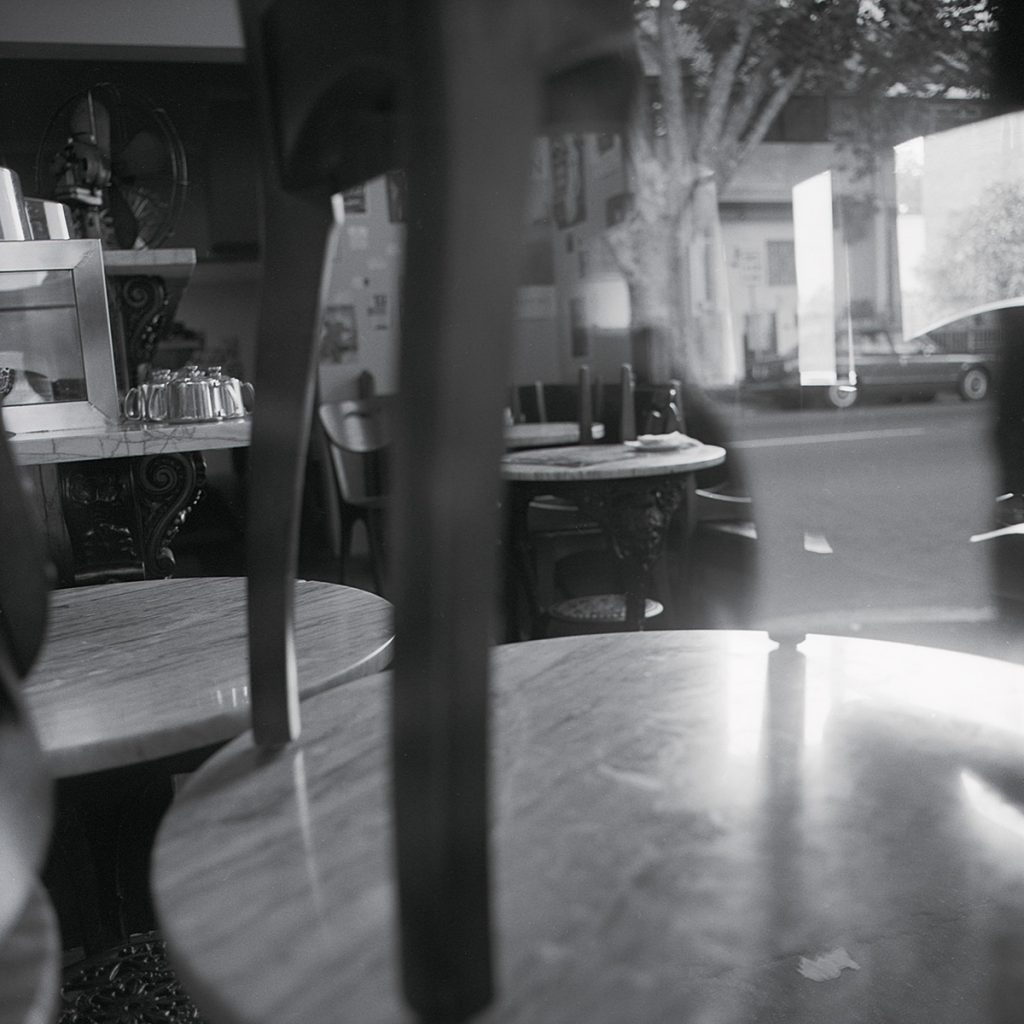My street work
I would typically shoot Saturday and Sunday mornings before the shops opened, and when there were fewer people around. Initially as I explored what worked and did not work, it was an advantage to not have to explain what I was doing. As I refined my approach I found that despite the obvious lack of the human figures on the streets, and thus in the image, the people were represented through the shop fronts and eateries I was photographing by their very absence. I felt there was already plenty of great work with an explicit representation of life/people on the streets. I was looking for a different angle/view. A more implicit representation.
I was looking at the work of Australian photographers like Max Pam, Carol Jerrems, David Moore, Max Dupain, and Emmanuel Angelicas to name a few. Looking internationally, the work of Harry Callahan and Joel Meyerowitz were also a big influence. It was Callahans work with shop fronts and windows that particularly resonated with me at the time (see my Callahan post).

I found that I got a stronger window reflection if the light (direct sun) was on the opposite side of the street, so I would work the shadow side of the street. To capture the other side of the street I would return at a time of day when the light had shifted across. Generally this meant coming back in the afternoon.
I found colour did not suit. The nature of black & white film was a better approach as it emphasised the abstraction qualities I was looking for. Titling the horizon further contributed to the abstraction. I was looking to work in the space between the recognisable elements that located the work on the street, and engaging with the more abstract forms present. Moving the camera in close also was an important aspect of my approach. Often the lens was right to the glass of the window.
Most of the Sydney work was shot using a Mamiya 330 twin lens with a wide angle. The waist level view finder was important feature of the camera, which helped me compose the image. Shooting full frame was important to me. I would work the camera until I was happy with the composition. The nature of the wide angle was another aspect I sought to make the most of. The optics of the wide angle meant the positioning of the camera off level exaggerated the titling effect.
I also learnt to use my own body as a means to impact on what was reflected and what was not. My body, which worked as a non-reflective element, would cut a hole in the window reflection. I could use this to highlight specific elements of the scene.
By the time I moved to working the streets in Melbourne I had shifted to a Hasselblad. Such a beautiful camera to use. With the shift to a single lens camera, I no longer had to contend with the parallex error associated with the twin lens!
This work bares witness ….

No Comments